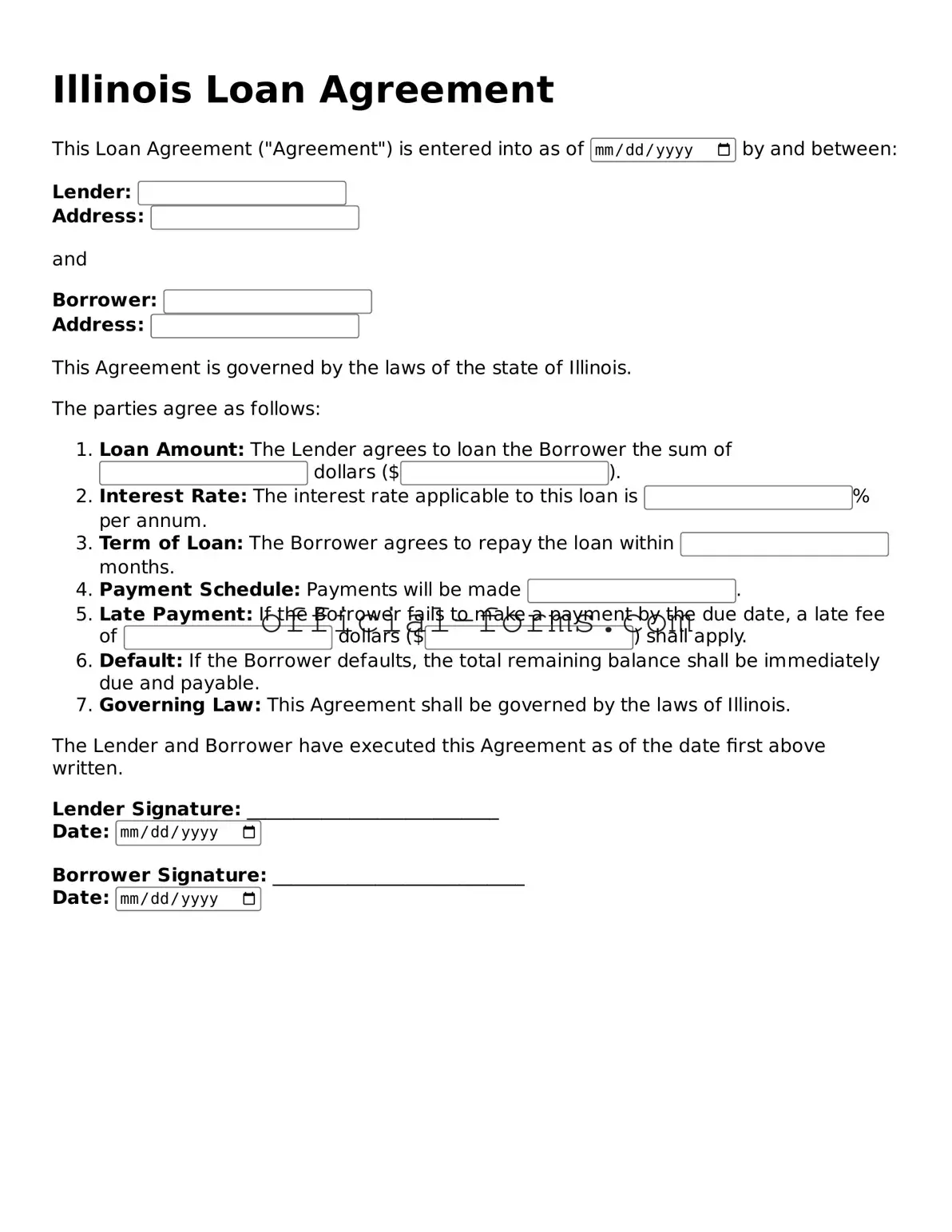When filling out the Illinois Loan Agreement form, many individuals make common mistakes that can lead to delays or complications. One frequent error is failing to provide complete personal information. Borrowers must include their full name, address, and contact details. Omitting any of this information can result in processing delays.
Another mistake is not accurately specifying the loan amount. Borrowers should ensure that the amount they wish to borrow is clearly stated. Writing an incorrect amount can lead to misunderstandings and potential disputes later on.
Many people also neglect to read the terms and conditions thoroughly. Understanding the repayment schedule, interest rates, and any fees associated with the loan is crucial. Ignorance of these terms can result in unexpected financial burdens.
Signing the document without a witness is another common oversight. In Illinois, certain agreements require a witness signature to be legally binding. Skipping this step can render the agreement unenforceable.
Additionally, borrowers often forget to date the agreement. A missing date can create confusion about when the loan was initiated, which is important for tracking payments and understanding the loan term.
Inaccurate information about the purpose of the loan is another mistake. Clearly stating the purpose helps both parties understand the intent behind the agreement. Vague or misleading descriptions can lead to complications down the line.
Some individuals fail to keep copies of the signed agreement. It is essential to have a record for personal reference and for any future disputes. Without a copy, borrowers may find it difficult to prove the terms of the loan.
Another mistake is not involving a co-signer when necessary. If the borrower has a limited credit history or poor credit, having a co-signer can improve the chances of loan approval. Neglecting to consider this option can limit borrowing opportunities.
Lastly, borrowers sometimes overlook the importance of reviewing the final agreement before signing. Taking the time to ensure all details are correct and that both parties are in agreement can prevent future issues. A rushed review may lead to errors that could have been easily corrected.
